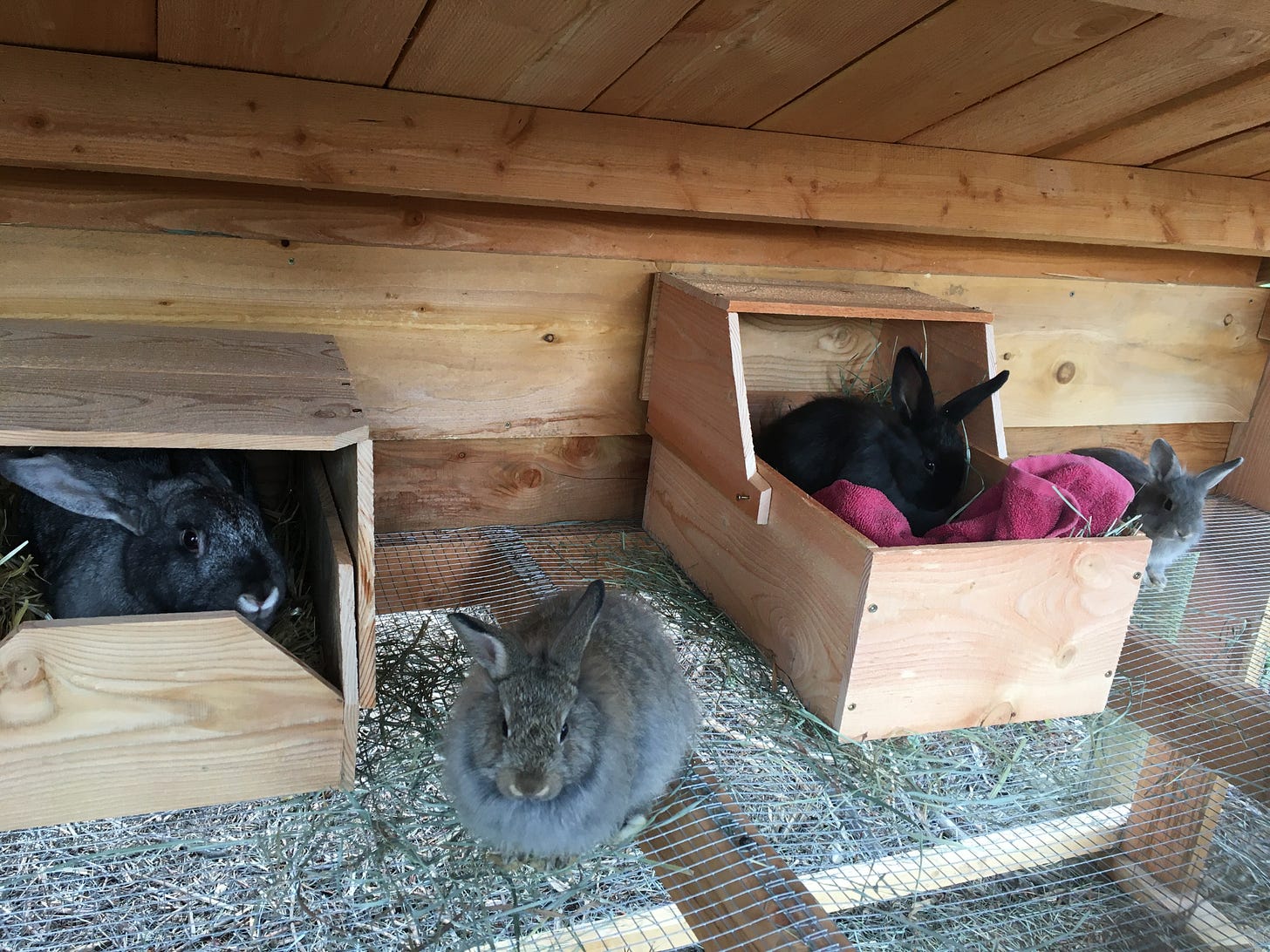When I started raising bunnies, I knew only the basics. I didn’t know what makes a ‘good’ rabbit, how their genetic traits work, or if they would do well in my climate. All I knew was that I wanted to learn first-hand. Since then, I’ve raised hundreds of bunnies, and though I’d never claim to be an expert, I feel I’ve learned a lot.
One of the most interesting traits came from one of my very first bunnies - Angora Wool.
Accidental Angora
It started a few years ago, with four bunnies that Curt picked up at the auction. ‘Mystery rabbits’, I had no information on their breeds, backgrounds, or what they would become. Since I was starting a meat breeding program, my priorities were their size, health and without hereditary defects. I planned to tan their hides, but the fur came second to meat.
Of those first four, Little Brown and Stoic turned out to have ‘Angora Wool’
What is Angora Rabbit Wool?
Angora rabbit hair is a fine fibre grown specifically by Angora rabbits. Through selective breeding, they’ve developed long fluffy coats. It’s considered a luxurious fibre, is hypoallergenic and exceptionally warm. People spin it into wool and knit garments with it or use it to make felt.
There’s also a breed of goat called Angora, which produces mohair.
I didn’t realize Stoic and Little Brown were Angora until Little Brown developed mats.
”Do I need to brush this rabbit?” I asked myself. The answer was a resounding ‘Yes’.
And so, I began learning a whole new aspect of rabbits and their fine fibre, something I never considered before.
The Ethics of Angora
Rabbit fibre is a source of controversy in animal activist groups, and rightly so. Big business harvests the fibre inhumanely in a way that hurts the bunny, but it doesn’t have to be that way - and shouldn’t be.
If you’ve ever had a Husky or German Shepherd, you probably had to brush them to remove their thick winter coat. Angora rabbits are similar. Because they’ve been bred to have long, thick coats, the old hair gets stuck and has to be removed. This can be done in one of many ways.
Blowing - using a high-powered blower, the fibre can be literally blown off of the animal. Dog groomers use this method. In time maybe I’ll invest in a blower.
Trimming - Using scissors or clippers to remove the fluff.
Plucking/Brushing - Gently pulling the shed fur out by hand. I like this as a way to sit and relax, and the bunny seems to like it too.

What to do With Angora Wool
I’ve been collecting bunny fur since the moment I realized that Little Brown needed to be brushed. I relax in the sun with my little long-eared sheep on my lap, brushing and plucking the loose strands. I’ve been collecting the shed Angora wool into a bag. The bunnies enjoy it -it undoubtedly feels stuffy in the summer.
Yarn
First, I tried spinning it by hand to make yarn. It was doable, but holy was it tedious. In the future, I’ll try making a spinning wheel to expedite the process. From there, I’d have to knit something, which for me, is a ton of work.
Felt
Next, I tried felting it and discovered a whole different avenue of textiles. Felt is fibre that has been matted together. If you have a wool hat, blanket or coat - it’s likely been felted. Wool Fibres are pressed and knotted until the hairs are firmly locked together. Like a person’s dreadlocked hair, but done flat to create a sheet of fabric.
Having fallen in love with a friend’s felt hat, I decided to give felting my stash of fancy fur a try. After watching some tutorials and picking up a few materials for it, I made this;
An Angora felt headband in its raw form. I might dye and trim it to make it look more 'normal’, but I’m surprised it turned into a thing at all. The process was messy and fun. It is crazy soft and warm, and when I wear it I feel like Radagast, the wizard from The Hobbit - you know, the one with birds living in his hair?
Multi-Purpose Rabbits
Since my winter is fairly intense, keeping the long-haired Angora gene within the herd makes sense to keep them healthy. My rabbits provide me with meat, manure, furs and now wool. Though my focus is on self-reliance and creating food, textiles have become an added and welcome bonus.







There are weavers who would buy the angora wool. I met one in Nelson. She did say she was looking for angora .